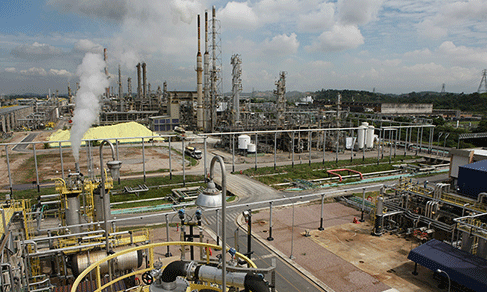Quarterly Livestock Surveys
Slaughters of cattle, hogs and pigs, and chicken register best Q1 in time series
June 11, 2025 09h00 AM | Last Updated: June 11, 2025 03h53 PM

Compared with the same period last year, slaughter of cattle, hogs and pigs, and chicken rise - Picture: Licia Rubinstein/IBGE News Agency
In the first quarter of 2025, slaughter of 9.87 million cattle head meant a rise of 4.6% compared with the first quarter of 2024 and an increase of 1.9% over the immediately previous quarter. Slaughter of 14.33 million head of hogs and pigs rose 1.6% in relation to the same period a year ago and a drop of 0.8% over the fourth quarter of 2024. On the other hand, slaughter of 1.64 billion chicken head represented an increase of 2.3% compared with the same period in 2024 and an increase of 1.0% compared with the immediately previous quarter. The three slaughters registered the best first quarter in the time series. The data are the complete results of the Quarterly Livestock Surveys for the first quarter of 2025, released today (11) by the Brazilian Institute of Geography and Statistics (IBGE).
In relation to the same period in 2024, more 435.61 thousand cattle head were slaughtered in the first quarter of 2025, with rises in 22 out of 27 Federation Units (FUs). January was the month with the greatest activity in the quarter, slaughtering 3.35 million heads, 4.8% more in relation to the same month last year.
Slaughter of females rose 11.3% over the same period in 2024, which shows the continuation of an increasing trend of this category in the first months of 2025. Angela Lordão, manager of the survey, explained that the increase in cattle slaughter was due to the bigger slaughter of females, which was a record, representing nearly half of the number of animals slaughtered. "The rising movement in the slaughter of females began in 2022, the year in which the price of calves began to drop, thus reducing their appeal. A point that also causes a stir is the slaughter of heifers, which are young females. It is a movement associated with a higher demand for premium beef, of a higher quality, as well as for an international preference for younger animals," pointed her out.
Angela Lordão also explained that the exports rose: "Brazil remains producing a lot of beef, addressing a warm domestic and foreign demand, highlighted by China and the United States, which also increased the acquisition of the Brazilian beef. We are delivering a lot of beef to the foreign market, which has favored our domestic production. In the case of exports of beef and pork, it was the best result for a first quarter and, in the case of chicken, the exports peaked the time series."
Slaughter of hogs and pigs and of chicken rose in the first quarter of 2025
The slaughter of 230.99 thousand more head of hogs and pigs in the first quarter of 2025, in relation to the same period a year ago, was leveraged by rises in 17 out of 26 Federation Units under the scope of the survey. That result in the slaughter of hogs and pigs registered the best January ever and meant the best first quarter in the time series started in 1997.
"In the case of slaughter of hogs and pigs, we notice that, despite the growth, slaughter has been decelerating in order to balance the supply. We have also noticed a greater diversification of our exports and we have managed to improve our destinations, which has favored the stability of this market. China reduced a lot the acquisition of pork, but we got new destinations, like the Philippines, which ascended over the last periods and reached the first position in acquisition," explained the manager of the survey.
The slaughter of more 37.17 million chicken head in the first quarter of 2025, in relation to the same period in the previous year, was determined by increases in the slaughter in 20 out of 26 Federation Units. That result registered the best months of January and February ever and meant the best first quarter in the time series started in 1997. Lordão highlighted that, during the period analyzed, Brazil maintained the sanitary seal of free from avian influenza, which favored a high foreign demand.
Milk acquisition rose 3.4% compared with previous period
Acquisition of raw milk reached 6.49 billion liters in the first quarter of 2025, with a rise of 3.4% in relation to the first quarter of 2024 and a drop of 4.3% against the immediately previous quarter.
The South Region reported the highest proportion in the acquisition of raw milk (39.6%), followed by the Southeast (36.3%), Central-West (10.9%), Northeast (9.3%) and the North Region (3.9%). "The South Region recorded the highest volume acquired in a first quarter for that region. Paraná was the state with the biggest growth (+10.1%) in relation to the same period last year. The Northeast has been also standing out in terms of the increase in the productivity, hitting a record in the production in the first quarter. We also noticed a fair demand for dairy products. We had a reduction in the production costs in the second quarter last year, which interferes in the activity as it increases investments," pointed Lordão.
The average price of milk paid to producers was R$2.76, an increase of 22.1% in relation to the same period a year ago and remaining stable in relation to the fourth quarter of 2024.
Comparing the first quarter of 2025 with the same period in 2024, the increase of 210.55 million liters of milk acquired at national level was due to the rises reported in 19 out of 26 FUs participating in the Quarterly Survey of Milk.
Leather acquisition grows 15.7% in relation to the first quarter of 2024
In the first quarter of 2025, the tanning houses investigated in the Quarterly Survey of Leather reported to have received 10.75 million whole cattle rawhide. This total represented an increase of 15.7% in relation to the same quarter last year and a rise of 8.1% compared with the immediately previous quarter.
As to the origin, the greatest part of leather came from slaughterhouses and cold stores, followed by the rendering of services, accounting together for 95.0% of the total pieces acquired in the period.
Production of hen eggs records 1.20 billion dozen
In the first quarter of 2025, the output of hen eggs reached 1.20 billion dozen, an increase of 8.3% in relation to the amount raised in the same quarter in 2024 and a drop of 1.0% against the immediately previous quarter.
More 92.14 million dozen eggs were produced compared with the first quarter of 2024, as a result of increases in 25 out of 26 FUs. More than half of the chicken farms, 1,132 (55.0%) produced eggs for consumption, accounting for 83.0% of the total number of eggs produced, whereas 925 chicken farms (45.0%) produced eggs for incubation, accounting for 17.0% of the total number of eggs produced.
Angela Lordão explained the recent rise in the price of eggs: "typically, the first months of the year register a smaller supply of eggs. On top of that, we faced an extremely hot period and a rise in the costs of food this year. The demand was particularly warm due to the Lent and to an increase in the exports, leveraged by an inflation in the price of eggs in the United States. In this scenario, the IPCA registered an increase of 31.7% in the price of hen eggs in the cumulative index between January and March.
More about the survey
On a quarterly basis, the IBGE carries out the official statistical surveys of the agricultural scenario, which are the Quarterly Survey of Animal Slaughter, Quarterly Survey of Milk, Quarterly Survey of Leather and Production of Hen Eggs. In order to meet requests from users to quickly access the information of the agricultural scenario, the IBGE began to release the first results of these surveys from the first quarter of 2018 onwards. These data are available nearly one month ahead the general release of the data in the newspaper IBGE Indicators: Statistics of the Livestock Production. The data can be accessed on Sidra.
The next release of the first results, related to the second quarter of 2025, will be on August 13, and the complete results, on September 10

















